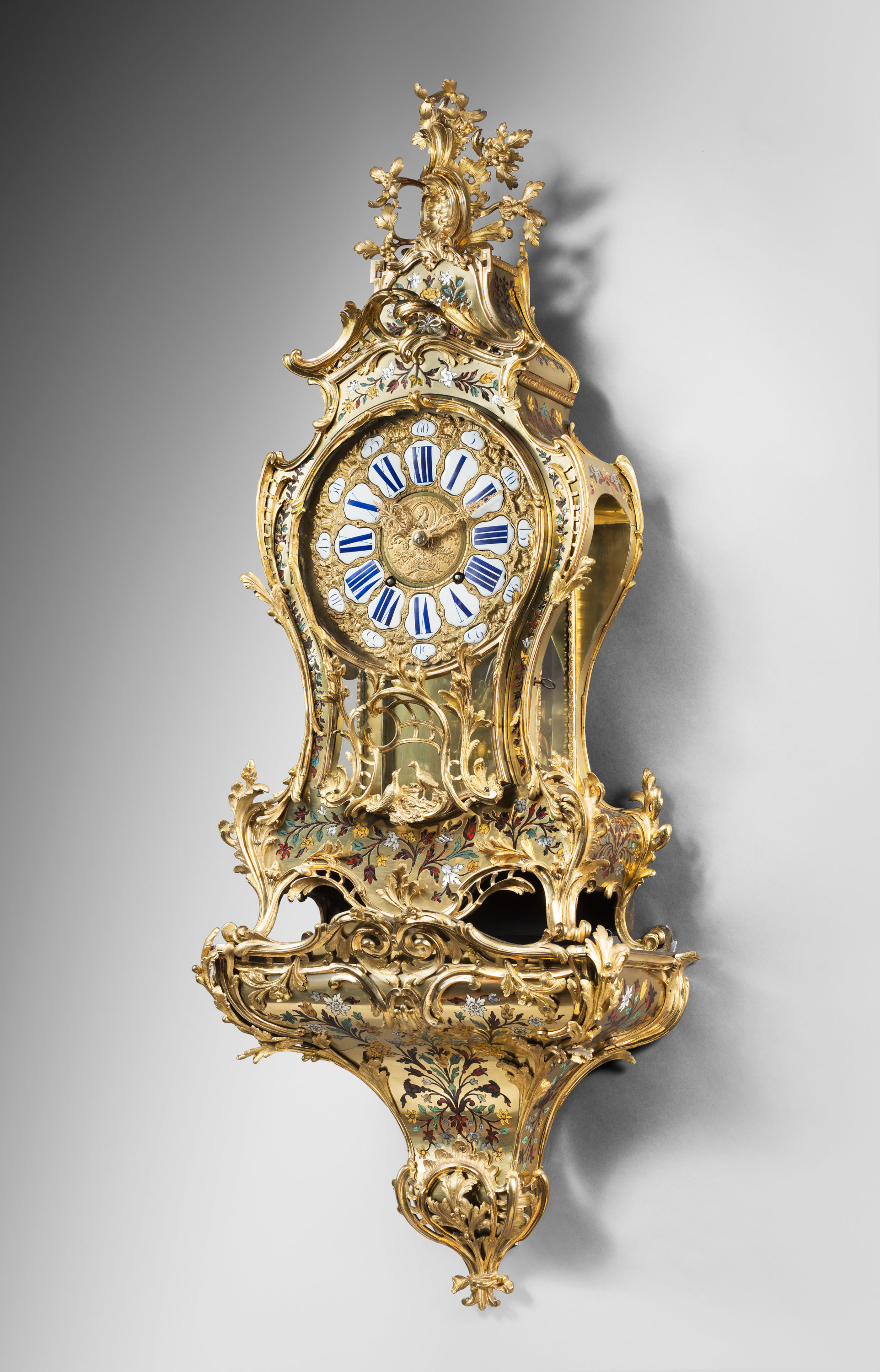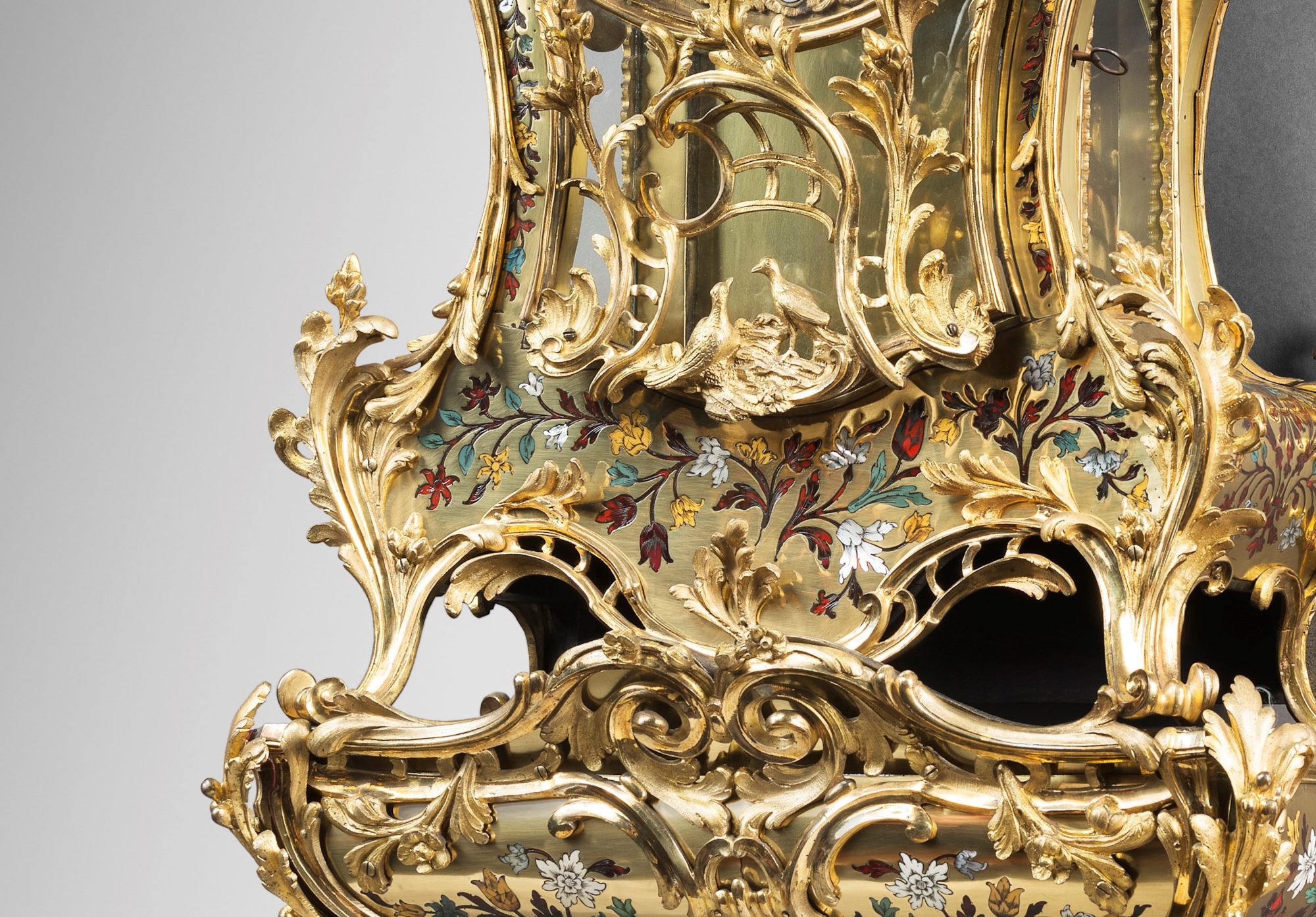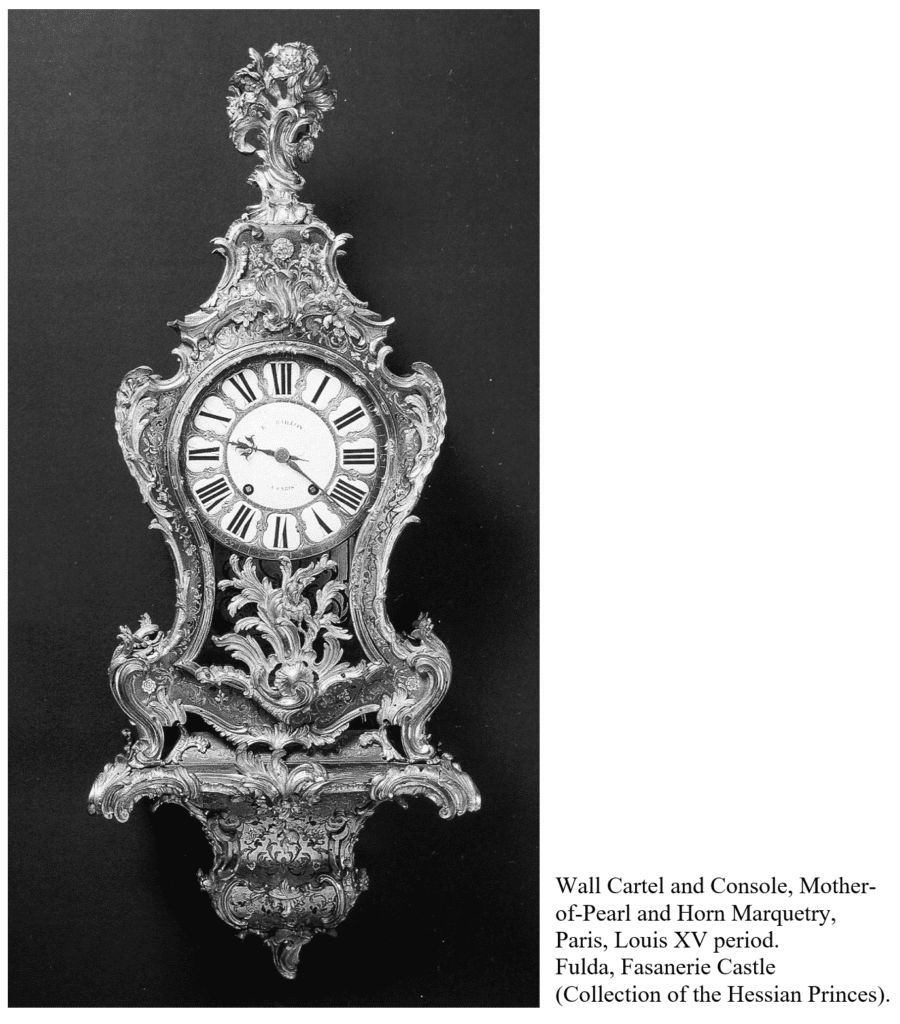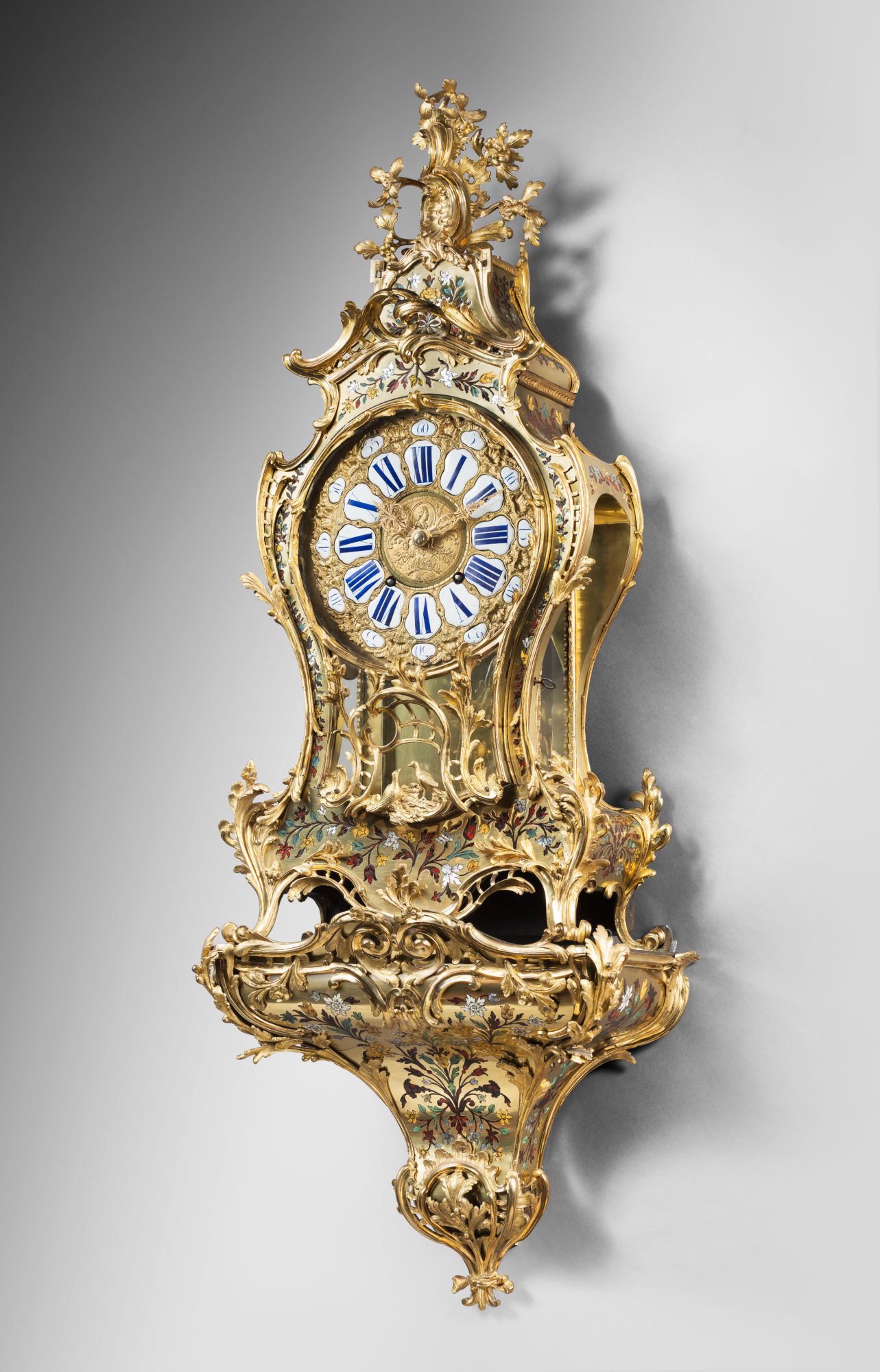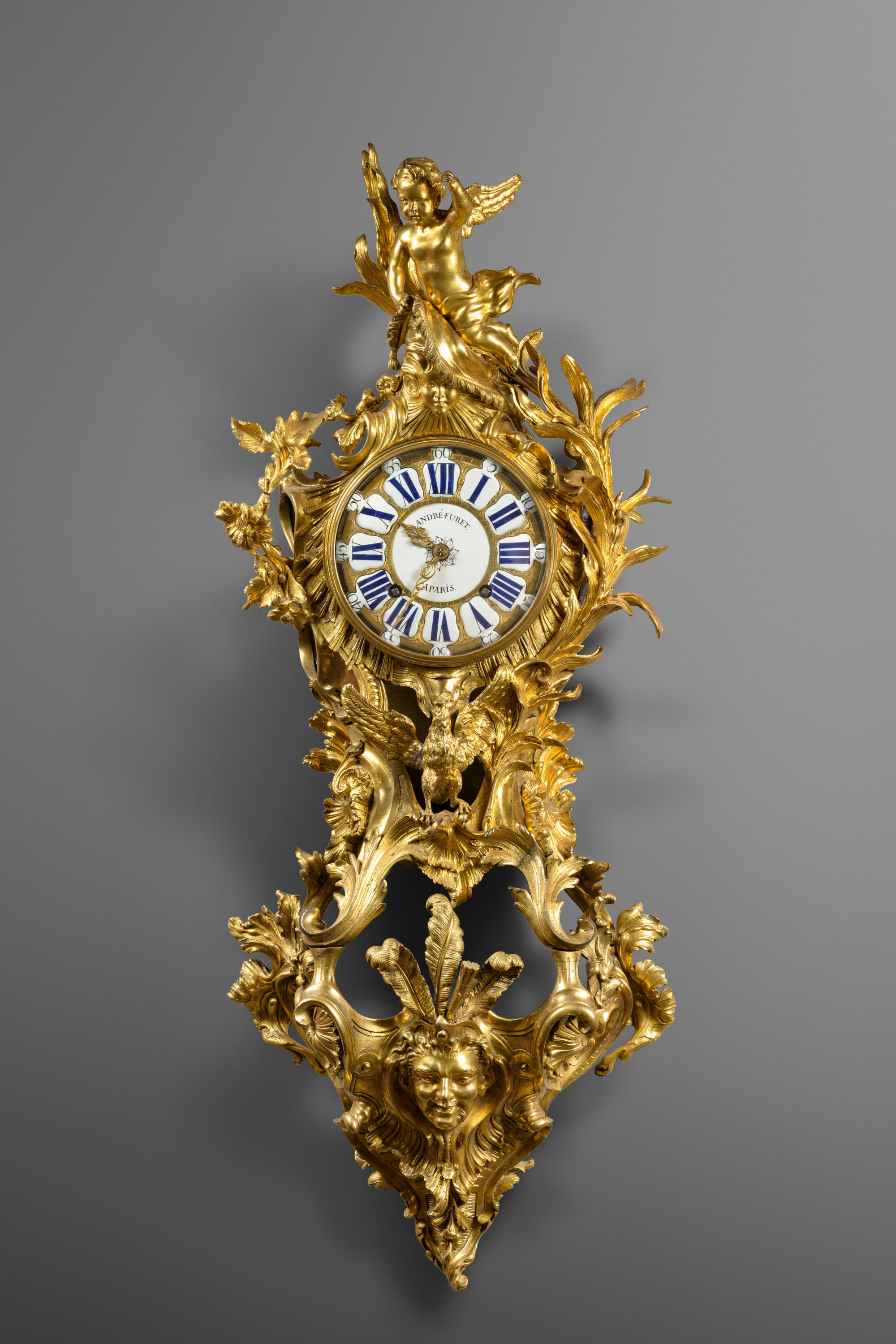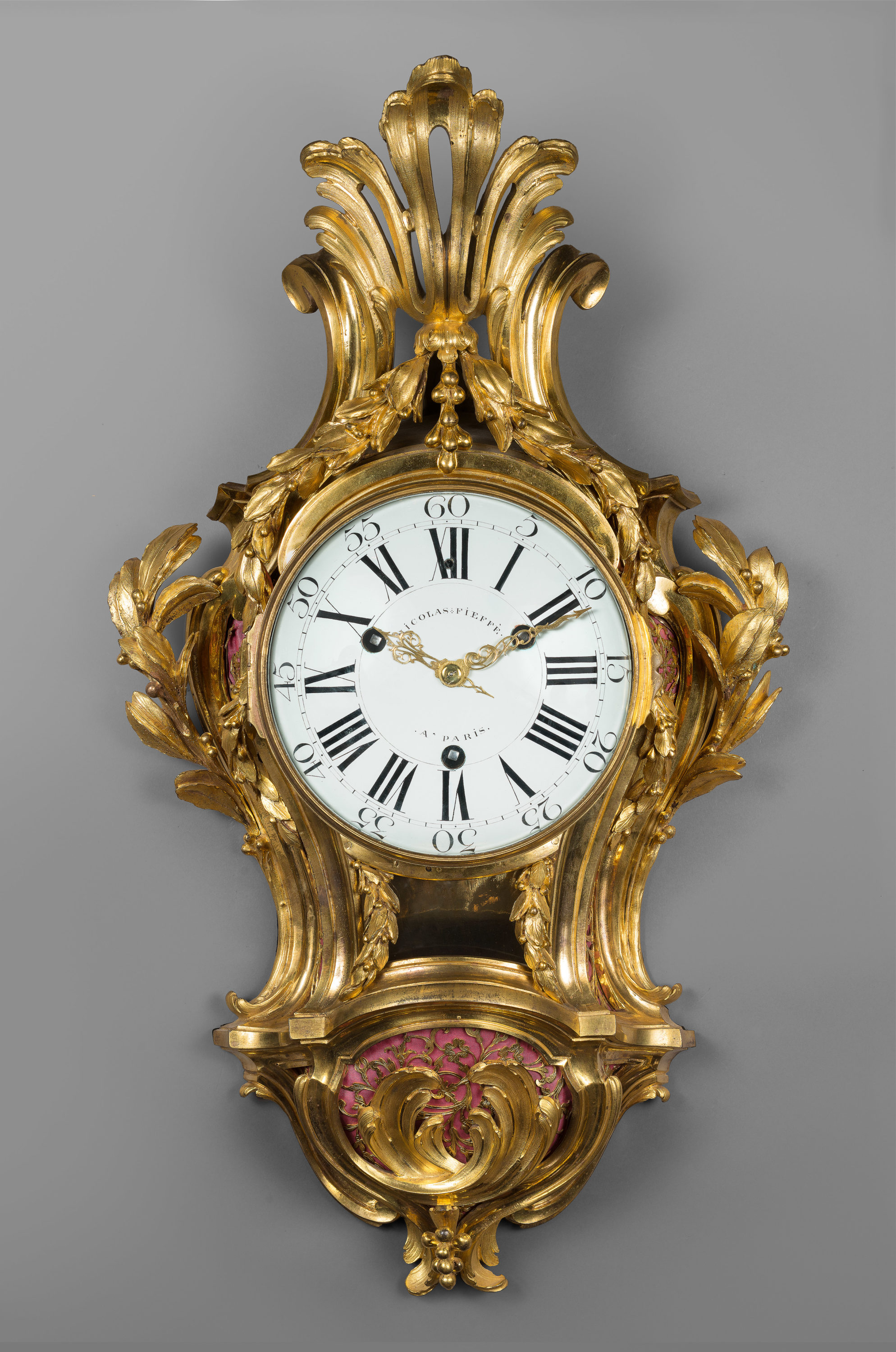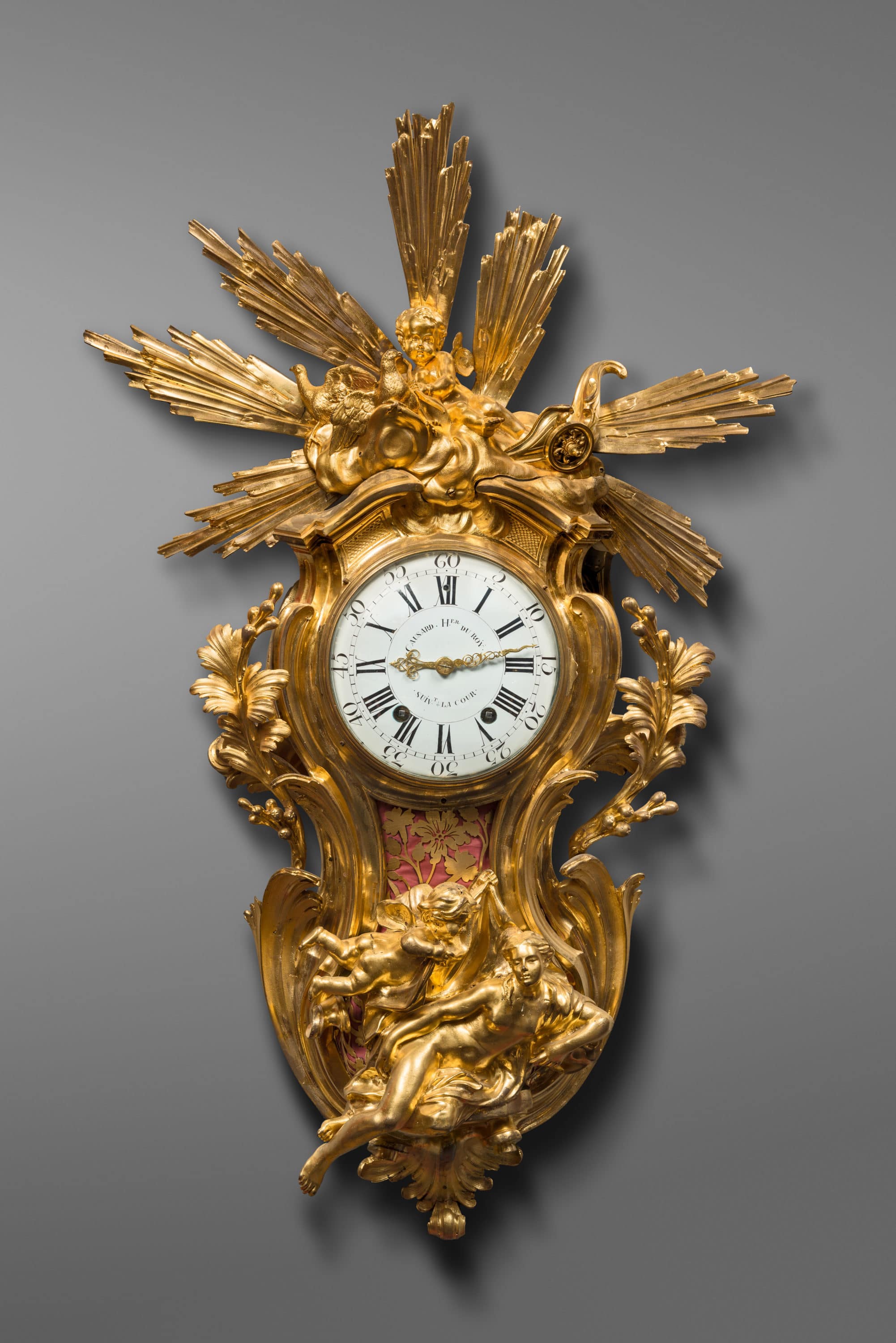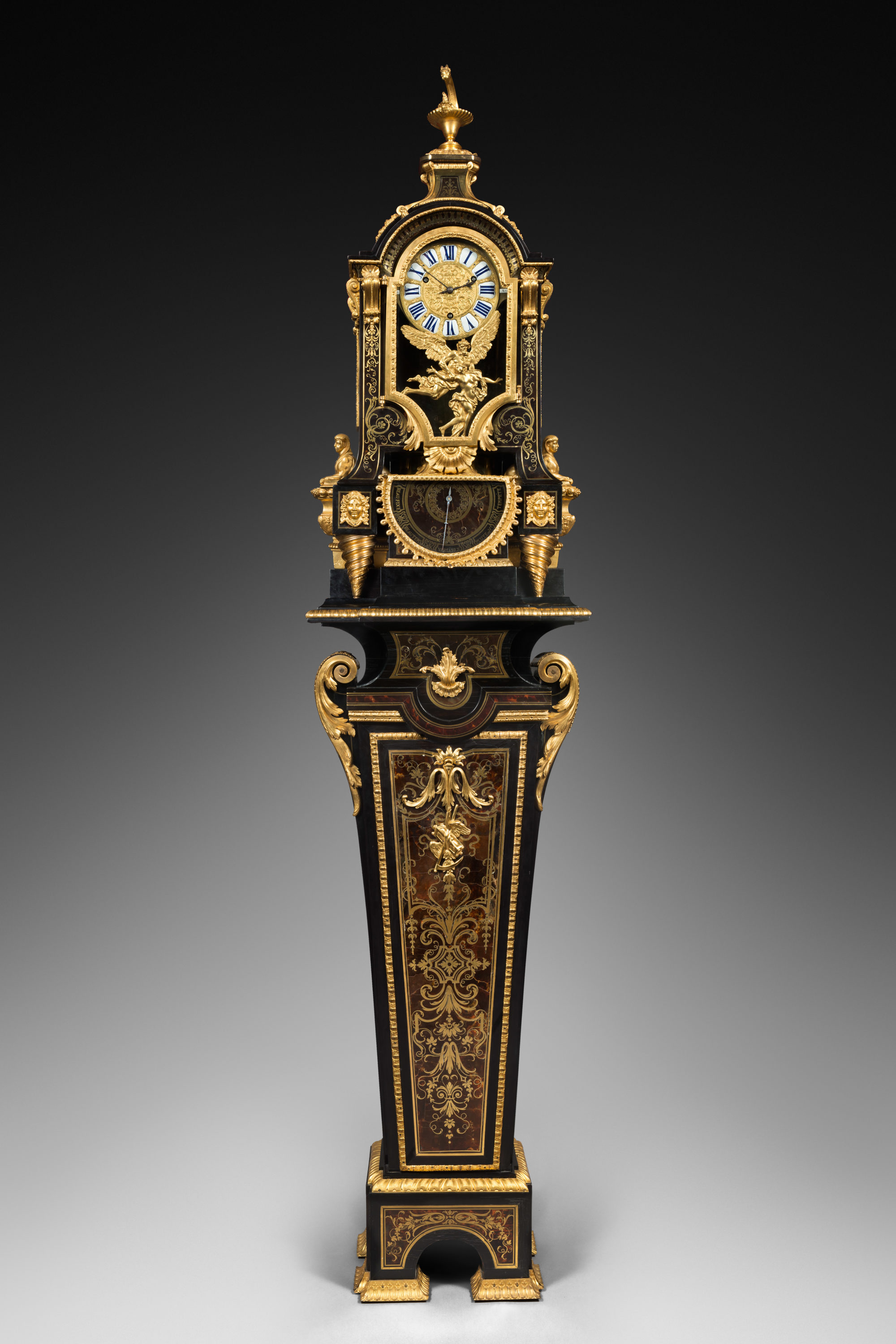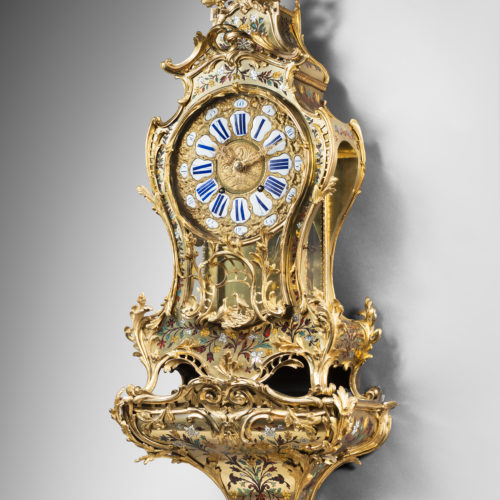Important Tortoiseshell, Stained Horn and Engraved Mother-of-Pearl Marquetry Wall Cartel and Console, on a Chased and Gilt Rocaille Copper and Bronze Ground
The chased copper dial features twenty-four white enamel cartouches that indicate the Roman numeral hours and the Arabic numeral five-minute intervals, by means of two pierced gilt bronze hands. The movement, signed “Gaudron à Paris”, is housed in a case that is inlaid overall with marquetry, featuring tortoiseshell, colored horn, or engraved mother-of-pearl flower and leaf garlands against a plain copper ground. The whole is elaborately adorned with finely chased gilt bronze mounts representing acanthus scrolls, shells, and C-scrolls, terminating in scrolls or flower garlands. The cartel is surmounted by a bouquet of leafy scrolls; the lower portion terminates in a wide leaf motif that is set against a pierced ground. Beneath the dial, two doves perch within a trellised cartouche.
Discover our entire collection of luxury wall clocks for sale online or at the gallery.
The unusual design of the present bracket clock retains all the magnificence and monumentality of the important horological creations produced by André-Charles Boulle during the reign of Louis XIV. Its rocaille gilt bronze mounts are particularly elaborate and its chasing and gilding are of exceptionally fine quality. The waisted case is stylistically similar to the work of certain great Parisian cabinetmakers of the time, who specialized in making clock and regulator cases, among them François Goyer, Antoine Foullet and Balthazar Lieutaud.
Today only a few similar wall cartel clocks are known. Among them, one example whose dial is signed “Gédéon Duval” is in the National Museum in Stockholm (see Tardy, La pendule française, Ier Partie: De l’Horloge gothique à la pendule Louis XV, Paris, 1975, p. 159). A second clock is in the Château de Versailles (illustrated in M. and Y. Gay, “Horlogerie royale au Château de Versailles”, in Bulletin de l’Association nationale des collectionneurs et amateurs d’Horlogerie ancienne et d’Art, Spring 1997, n° 78, p. 23, fig. 33). A third example, with a movement by Bunon, is illustrated in J-D. Augarde, Les ouvriers du Temps, La pendule à Paris de Louis XIV à Napoléon Ier, p. 119, fig. 80. A fourth cartel, by Etienne Baillon, was in the collection of the Hessian princes in the Fasanerie Castle in Fulda (illustrated in the exhibition catalogue Gehäuse der Zeit, Uhren aus fünf Jahrhunderten im Besitz der Hessischen Hausstiftung, 2002, p. 47, catalogue n° 12). One further similar cartel, now lacking its bracket, which illustrates the fable of the fox and the stork, is in the Royal Spanish Collection (see J. Ramon Colon de Carvajal, Catalogo de Relojes del Patrimonio nacional, Madrid, 1987, p. 28, catalogue n° 9).
Given the date of the present clock, this signature refers to the partnership between Pierre and Antoine II Gaudron, the sons of the clockmaker Antoine Gaudron, who took over their father’s workshop after his death and continued to run it until approximately 1730.
One of the most important Parisian horological workshops, active from the second half of the 17th century to the middle of the following century. Founded circa 1660 by Antoine I Gaudron (circa 1640-1714), the workshop rapidly grew, and Antoine I went into partnership with his two sons, Antoine II Gaudron de Sainte-Marthe (1675-1748) and Pierre Gaudron (circa 1677-1745), both clockmakers as well, who were awarded the prestigious titles of, respectively, “Conseiller, Secrétaire du Roi, Maison et Couronne de France près de la Chancellerie du Parlement de Metz” and “Horloger Ordinaire du duc d’Orléans”. After the death of their father, the two brothers worked together from 1710 to 1730. The workshop became famous for its work with André-Charles Boulle, for whom the Gaudrons produced magnificent movements throughout the cabinetmaker-sculptor’s career.
